Animation NCR Validation Team
To keep the Training Regulations (TR) of each Qualification relevant and up to date. TESDA updates each qualification every 5 years. Training Regulations for Animation NCII, 2D Animation NCIII, 3D Animation NCIII and Visual Graphics Design NCIII was created last 2005, so these were overdue for an update. (NC stands for National Certificate)
As one of the original developers for these 4 qualifications, Ms. Grace Dimaranan was tasked by TESDA to form a new team of experts to update them. You may ask, why does TESDA need to update in the first place? It may be because of new techniques, new technology, or even new definitions, but the main reason is to make sure that the candidates who will be training under these qualifications, will be sure that the skills they learn are what the industry needs today.
Last October 2016, we were one of the Industry Experts tasked by TESDA to update the Training Regulations of Visual Graphics and Design. The venue was at the TESDA Main Office in Taguig, we all gathered at the room assigned to us at about 9AM. To better organize, all the experts for the 4 qualifications were all together in one place, for orientation. TESDA assigned experts to guide us to make sure that all adjustments made to the current TRs are based on the standards of TESDA.
Training Regulations (TR) Development
It was explained that we could work on the TRs at home and when we were done we would send it online for the TESDA representatives to check when all the TRs were ready, we would then meet at TESDA to polish the work we have done.
One TESDA objective was to streamline the Core Competencies of each qualification and to make sure that the Core was all critical to learning that particular skill. We had to take out certain Core elements or merge 2 elements into 1, so it would much clearer for both the Trainor and the trainees when the new TR is released. As an example, in the original TR for Visual Graphics Design, Creating Vector Graphics using graphics application, was a core or unit of competency. In the new TR, this is now incorporated in Creating a Logo Design, since using software was not really a skill but only a tool to apply the skill, which was designing a logo.
We were given until the end of November 2016 to finish the TRs, we then needed our work validated by Industry experts for each qualification. Ms. Grace again was tasked to invite 5 experts for each qualification. The validation was scheduled on December 15, 2016, 9am to 5pm at the TESDA Main Office in Taguig.
For Visual Graphics Design, we had 1 Illustrator, 1 Web Designer/Teacher, 2 Graphic Designers and 1 Window Display artist. For 2D and 3D Animation, we had animation trainers, animators, animation supervisors, as well as animation studio/training center owners and managers. We needed to get their signature and approval for these NEW TRs to pass. After a whole day of validation, with a few revisions regarding terms and criteria, all 4 Qualifications passed. It was both tiring and draining, but it was all worth it.
3D Animation NC III Validation Team
Luis Presenting to the 3D Animation NC III Validation Team
Grace and Aceron Presenting to the Animation NC II Validation Team
2D Animation Validation Team
Visual Graphics Design (VGD) NC III Validation Team
Alstaire Presenting to the Visual Graphics Validation Team
Validators Received a Certificate and…
 Catered Food for the Whole Day
Catered Food for the Whole Day
We thought that we’ve finished our tasks but TESDA explained that after developing the TR, the next step was to also update the Assessment Tools, which according to TESDA, will be much more difficult to do. Assessment Tools are the questions, tasks, and demos that the candidate needs to do to qualify for the particular skill. I would compare it to a FINAL EXAM for the skill you trained for.
Assessment of Tools Development
At first, we were thinking why TESDA says it will be difficult than updating of the TRs. We thought this would be easier since we will be making a test paper for TESDA to use. That was easier than creating a curriculum which was the TR. But when they explained that we had to connect our questions to each performance criteria in the TR, it wasn’t easy as we thought it would be. As an example, if the criteria asked, “Read the design brief”, we had to ask questions such as, “Give an important part of the design brief?” Then the next criteria were “Analyze the design brief”, which the question you formulated can still be used. But TESDA had rules, we needed to formulate 3 questions for each performance criteria, and we can’t reuse the questions.
After finishing the questions we also needed to create a Task or Actual Demonstration of the Assessment of each qualification. Then we had to give the hours needed to complete each task. We were told by TESDA that after all the tools are finished, we will then again be validated but in a different way. We will need to invite a TESDA certified assessor plus 3 dummy candidates to use the Assessment Tools we made in a mock assessment. Validation is needed so we know if the tools we made fit to the current length of time for each assessment; to know if it is understandable by both the assessor and the candidates; to see if the assessment is too difficult or too easy. We needed to get 3 dummy candidates to get the average time of completion. Once all data are gathered, if needed, we can then adjust parts of the assessment tools to make it better. After validation, a regional validation will be scheduled, either in Davao or Cebu. This will then be cleared in front of the TESDA board, like defending a thesis in front of a jury. When this is all approved, then will it be released by TESDA nationwide.
Our deadline to complete our Assessment tools is this March 2017. As of now, Animation NCII has already been completed, so validation for that qualification is already set next week.
March to September 2017
We had a number of meetings to create questions for each performance criteria in each Certificate of Competencies (COC). Which was difficult because we needed to make the questions so both students and professionals can understand it. Plus we needed to make the questions according to the standard of TESDA, that it should start with a What, who, how and why.
It was also difficult because it was difficult to synchronize everyone’s schedule. TESDA wouldn’t allow only 1-2 people to deliberate.
Eventually, with the help of our TESDA representative, we were able to fix it and schedule the validation. But it still had to go through checking from the higher-ups in TESDA before we could go through validation.
VGD Validation September 29, 2017
To validate the Competency Assessment Tools or CATs we invited students and people working in the Graphics Design industry. Visual Graphics Design has 4 COCs (Certificate of Competencies), develop designs for
1) Logo and Print Media
2) User Experience and User Interface
3) Packaging Design
4) Booth and Product/Window Display
For each COC we needed 1 Assessor, 1 Observer, and 2 candidates (a student and a professional). Plus we needed people who will be taking all 4 COCs or Full Qualification for the National Certificate. So we needed a total of 10 people to invite.
We got some of our students and also some from other schools, we also invited some members of the Graphics Design group on Facebook. Validation started at 10 am since we had to wait for all the participants, some of them coming all the way from Marikina. The Validation ended 8 pm, and we gathered everyone’s feedback.
Most of the difficulties were towards COC 2, User experience and user interface. Which wasn’t a surprise since this was still new. There were a few confusion on words in the instructions, and also some clarifications with some questions. Overall, the feedback was positive. We will need another day to schedule with TESDA to finalize and polish the assessment tools.
To be continued….
Essay and Pictures by Alstaire A. Sarthou
Animation Production Entrepreneurship NC 5
TESDA Complex, Taguig City
Last July 20, 2017, Grace Dimaranan invited industry experts and professionals composed of studio owners, producers, directors, business development managers, marketing and financial managers, school and training owners to validate the Training Regulations (TR) for a new program being formed at TESDA called: Diploma for Animation Production Entrepreneurship NC V (APE NC 5). The said NC or National Certificate is the highest level given by TESDA. The said program has been developed by Grace and other industry experts since May 2017 and the invited professionals for the validation were asked to give comments and suggestions to improve the TR. Unlike other courses, the said course will not undergo validation of the TR in other areas such as Cebu and Mindanao. Another new course: Web Development NC 3 will be validated by other industry experts and professionals at some other time.
For the past few months, Grace’s schedule has been very hectic, with lots of meetings and coordination with many industry experts and professionals. Grace is the Animation Council of the Philippines’ (ACPI) representative to head the development of the TR and CATS of the Animation NC 2, 2D Animation NC 3, 3D Animation NC 3, Visual Graphics Design NC 3 , Diploma in Animation Production Entrepreneurship NC V and Web Development NC 3. One program can take many months to finish as professionals and industry experts cannot be expected to meet regularly on a weekly basis for the validation of the TR and CATS.
Grace A. Dimaranan
The validation of the TR for the new course was held at the TESDA main office basement at the Qualifications and Standards Office (QSO) meeting room from around 9:40 am to 6:00 pm. The standard TR of TESDA was first explained by Mr. Venzel C. Concoles, a QSO specialist and later connected these standards with the TR draft of APE NC V. The main purpose of TESDA for bringing out the course is to provide more jobs to the country among other things.
The said diploma course will help prepare animators or other business people who want to go into animation production to set up their own studios, market their services and be able to sustain their business. From past observation, many animators who put up their own studios were not able to sustain their business mainly from their lack of marketing and entrepreneurship know how. The one year program requires the candidate to devote his full time to get the diploma. However, the candidate can opt to get a Certificate of Completion (COC) for 3 months upon completion of certain modules of the program.
Mr. Venzel C. Concoles, QSO Specialist at TESDA
The comments and suggestions by the professionals were then inputted in the TR draft of the APE NC V by Samuel E. Calado, Jr., a QSO specialist. The validation was a bit tiring as there was only a working break time in the morning, short lunch break, and working afternoon break time to provide some respite from the continuous explanation, presentation, validation and correction of the TR. There were many topics of core competencies that were covered.
Samuel E. Calado Jr. in Blue
If the TR is approved, it will be followed by the Competency Assessment Tools (CATS), it’s like the exam for the candidates, this will take another 2 to 3 months to develop with assigned industry experts. It will then be followed by the computation of the Assessment (of) Fees of the Candidates. The whole developed TR, CATs and computed assessment fees will be presented to the TESDA Board for deliberation and approval. Once approved it will be promulgated nationwide and the printed booklets for the said course will be distributed nationwide and uploaded at the TESDA website.
A sample of TESDA TR Booklet for a Course
Pictures and Essay by Edward L. Tan
February 12, 2018
Training Regulations (TR) Presentation to the TESDA Board – Standards Setting and Systems Development Committee (TB_SSSDC) at the 7F TESDA Admin. Bldg., TESDA Complex, Gate 1, East Service Road, South Luzon Expressway, Taguig City. Schedule set was 9 am – 11 am, but we concluded by 2 pm. Buffet Breakfast and Lunch were provided by TESDA. The presenter was Grace A. Dimaranan.
Qualifications and TR Developers present
- 2D Animation NCII &
- Animation NCIII
– Aldwin Ayao
– Angi Palanca
– Aceron Ramirez
- 3D Animation NCIII
– Edgardo Bayani
- Visual Graphics NCIII
– Alstaire Allison Sarthou
– Junnar Orioque
– Joseph de Vera
- Web Development NCIII
– Rom Verdan
– Mike Torres
– Karlo Martin Robosa
TESDA Board Representatives
Grace presented all 5 TRs with changes that were made from the last version. The TESDA Board asked why ACPI was handling all the courses, especially Web Dev and Visual Graphics. Apparently, there is no official group for these and since clients for animation come from these industries, Grace suggested these TRs with the developers being from each industry so the current standards are applied.
The TESDA Board asked for data on ACPI membership as well as job opportunities for each TR. One of the developers tried to explain the difference of 2D animation NCII and Animation NCIII, using bicycles and motorcycles as an example; but one of the TESDA Board says you can’t use an analogy if you don’t have data to back it up. The developers were allowed to intervene or help with the presentation.
All the TRs were approved with fixes. The main argument was, a line stating that “ACPI shall provide a certification on who can be a teacher or instructor of the new TRs.” The TESDA board says this will cause problems in the long run, 1. The facilitators, aside from TESDA, will need to go to ACPI to secure a certificate, which could cause confusion 2. What if ACPI dissolves, etc… Other areas that were questioned were more on gender equality as well as job opportunities for the disabled.
Pictures and Essay by Alstaire A. Sarthou
May 27 to 29, 2019
Last January 28, 2019, I received an invitation for a meeting with ALL national experts for February 12, 2019. The TESDA Certification Office will be conducting a Capability Building Program (CBP) for Prospective Lead Assessors for 31 new/amended Training Regulations for 2019. This program aims to ensure uniform/standard conduct of competency assessment and develop the pool of prospective competency assessors for the different qualifications.
To my surprise, Ms. Grace Dimaranan, and Joseph de Vera, VGD developer, did not know about this meeting, but since they were scheduled to go to the TESDA Qualification Assurance Office at the same day. We scheduled to go together.
February 12, we attended the meeting, and together with other qualifications, such as Warehousing Services, Animal Production (Swine), Carpentry, etc… The purpose of the meeting is to check all the Training Regulations (TR) and Competency Assessment Tools (CATs) that was printed if there are any errors before being promulgated. Ms. Grace was surprised that she wasn’t invited to the meeting since she was the lead expert for 5 qualifications that were included. We learned that the person in charge of inviting just picked out 2 names of experts from each qualification and invited them. She did not know Ms. Grace was the lead expert. And since the other experts did not really know what the meeting was about, they declined to attend. At this time, Jonathan Martin, an expert for Web Development, arrived and joined our group. So some qualifications did not have representatives in the meeting, these qualifications won’t be included in the program. So we decided to represent each qualification that had no representative, Alstaire represented 2D Animation NCIII, Joseph represented Visual Graphics Design NCIII, Jonathan represented Web Development NCIII and Grace represented 3D Animation NCII, unfortunately, we were a person short, so Animation NCII had no representatives and it was dropped for the Capability Program.
From Right to Left: National Experts, Jonathan Martin (WebDev), Grace Dimaranan (3DAnim), Joseph de Vera (VGD), Alstaire Allison Sarthou (2DAnim) and Ms. Dianne Naag-Marfil, TESDA Certification Office.
During the meeting, we found some typo errors, as well as documentation that was supposed to be removed. So we marked those and the Central Office said that it would be sent back to the Qualification Office. Anyway, they also discussed to have the attendees be National Lead Assessors for the program. In order to be National Lead Assessors, All experts should undergo assessment for Training Methodology I – Conduct Competency Assessment Training, so they can be a qualified assessor. This was an opportunity for Grace, Jonathan, and Joseph since Alstaire was already an assessor, he did not need to take the assessment.
They scheduled a face to face coaching/mentoring on Conduct of Competency Assessment on February 28, 2019, to orient the experts on the assessment. Then the Assessment was scheduled on March 2, 2019.
Grace, Jonathan, and Joseph, as well as the other experts for the different qualification all, passed the assessment. We were then scheduled for the Capability Building Program that would be held on May 27-29, 2019.
The next thing that TESDA needed to do were to find candidates of Lead Assessors from the different regions to attend the program because they will be taking the assessment for this new TRs and we will be explaining to them the changes so that they can also explain these to their following regions as well.
We learned that a number of candidates registered into multiple qualifications such as Visual Graphics, 3D Animation, 2D Animation, and Web Development. Which they were later told to only choose one, other candidates backed out because they did not qualify due to the new entry in the TRs that they needed to have 5 years of industry experience.
Last April 1, Ms. Dianne Naag-Marfil of the TESDA Certificate Office sent us a list of nominated candidates from the different regions and how many were qualified.
– 2D Animation NC III: 14 nominated; 12 qualified
– 3D Animation NC III: 3 nominated; 3 qualified
– Web Development NC III: 16 nominated; 14 qualified
– Visual Graphics Design NC III; 27 nominated; 24 qualified
TESDA requested the Human Resource Development Institute (HRDI) located at the Philippine-Korea Technological and Cooperation Center, Bayano Road, Taguig, as the venue of assessment. But due to the limited number of computers available, a 2nd venue was requested in eTESDA Center, PEVOTI Building at the TESDA Complex, Taguig. TESDA, due to the number of candidates, requested additional experts and that they commit to the dates needed. Each assessor is only allowed to assess 10 candidates in an assessment. So we were split into teams together with other experts. Mr. Aceron Ramirez and Mr. Aldwin Ayao (already Assessors) would handle 2D Animation, Ms. Cynthia Javier for 3D Animation, and Mr. Jonathan Martin and Mr. Rom Verdan for Web Development, would be conducting the program at the HRDI, while Alstaire Allison Sarthou, Joseph de Vera and Grace Dimaranan would be handling the Visual Graphics Design at eTESDA.
TESDA would be handling accommodation and food expenses for all the candidates.
NOTE: I will only be documenting the program conducted at the eTESDA for Visual Graphics, but I have pictures of the program held at the HRDI, which I will add at the end.
TESDA Capability Building Program for Prospective Regional Assessors
For Visual Graphics Design NCIII, 2D Animation NCIII, 3D Animation NCIII and Web Development NCIII
May 27,2019
The program started at 9 AM, and as usual at TESDA we were provided breakfast and free flowing coffee. TESDA facilitators discussed what were the expectations from the program, they identified the objectives and they presented the activities of the program. A pre-test was then given to the candidates. Then the floor was given to us experts, we explained the changes in the Training Regulations as well as why it was changed. After a hearty lunch, we continued explaining the evidence gathering process for Competency Standards and discussed the use and correct interpretation of the Competency Assessment Tolls (CATs).
Most of the candidates were excited to take the assessment, and they think that assessment would be much more aligned to the industry. During the afternoon, TESDA focal persons from each region were given an assignment for assessment on the next day. There was also another Q&A to see if there were other concerns. The program ended at 5 PM.
Grace and Alstaire explaining the changes.
Alstaire explaining the changes
A candidate discussing expectations.
Joseph introducing himself.
A hearty Lunch
Visual Graphics Design Experts
May 28,2019
The assessment started at 8 am and was scheduled to end at 5 PM, 24 candidates arrived and took the assessment. We divided the candidates into 3 groups, where each expert would handle 8 candidates each. There were 2 parts of the assessment, the first part was the demo, where each candidate was given a task, and2nd the Oral Interview, where the assessors can learn the candidate’s knowledge as well their background. During the demo, we already saw some candidates that obviously did not have any skill in Graphics design. The skilled finished in time while the rest asked for an extension. During Oral Interview, we learned that some of them were just nominated by their region because there was no one qualified. Like in Alstaire’s group, there were 3 who did not really have industry experience. Assessment finished at 10 PM.
Visual Graphics Design Assessors
Alstaire observing assessment Demo
Grace observing assessment
Joseph observing demo
May 29,2019
At 9 am, we started the Plenary Session, the debriefing on the Conduct of Assessment. Discussed, were the concurrence on a uniform and standard conduct of assessment as well as the areas of improvement for the candidates who will pass. The candidates who passed would be conducting this same program at their respective regions.
According to the TESDA facilitator, passing the assessment is not the only requirement for the candidate to become the Regional Lead Assessors. They had to pass the pre-test and post-test (which will be done at the end of the program), and they would be graded for their conduct and appearance, and a recommendation from the experts will also be needed.
There was a very positive response on how the assessment was conducted, and most of the complaints were from personal experiences each assessor encountered in their region. Which the TESDA facilitators answered expertly. The post-test was then given to the candidates, and the candidates and their respective TESDA focal persons were asked to give an evaluation on the program as well as the National Lead Experts.
For the closing of the program, the candidates who passed the assessment were awarded their National Certificates in Visual Graphics Design NCIII. And the National Lead Assessors, namely Alstaire, Grace and Joseph were also awarded their Grandfather National Certificates for Visual Graphics Design NCIII, for being the experts for the Training Regulations.
After reciting the Assessor’s Credo and singing the TESDA hymn, we then proceeded to photo ops. The program ended at around 4 PM. Some former Top Peg artists, Joel Orcena (BG Artist from Daet) and Bryan Lumantas (Animator from Davao) that attended the 2D Animation Assessment at the HRDI, went to meet us and joined us back to Top Peg.
Candidates at the Plenary Session
National Lead Assessors together with TESDA facilitators Ms Nash and MS. Rachel
Alstaire receiving his Grandfather NC
Group shot
A candidate receiving his NC
A TESDA focal person giving her evaluation
Grace and Alstaire together with former Top Peg animator Bryan Lumantas (Davao)
With Joel Orcena (Daet) and Bryan Lumantas (Davao)
Assessment at HRDI
New Assessors for 3D Animation
NewAssessors for 2D Animation NCIII
Group Shot – 2D and3D Animation, Web Development 2
Essay and Pictures by Alstaire A. Sarthou
















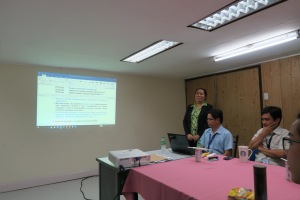











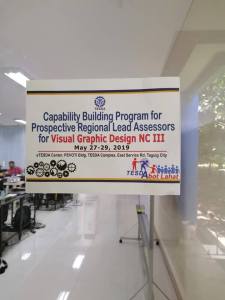











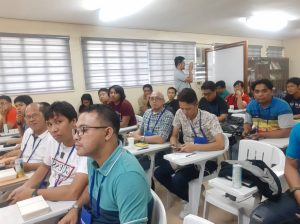
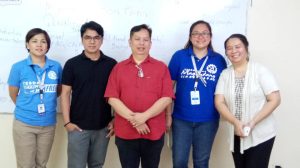











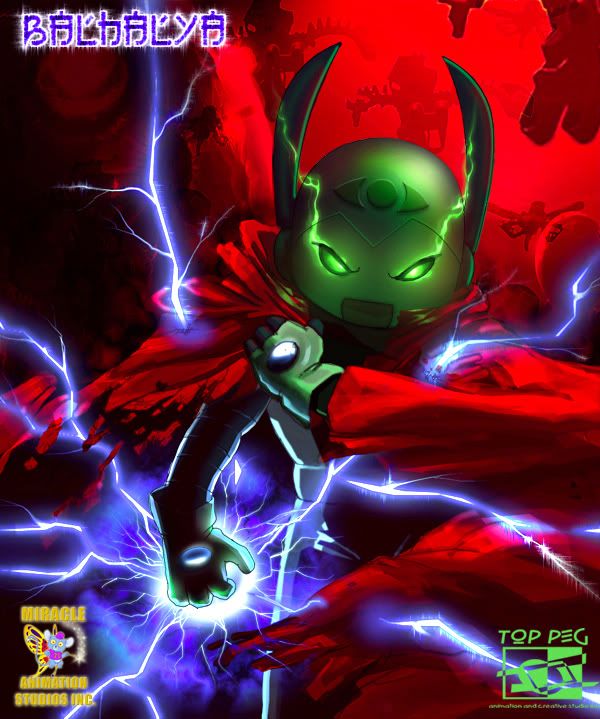







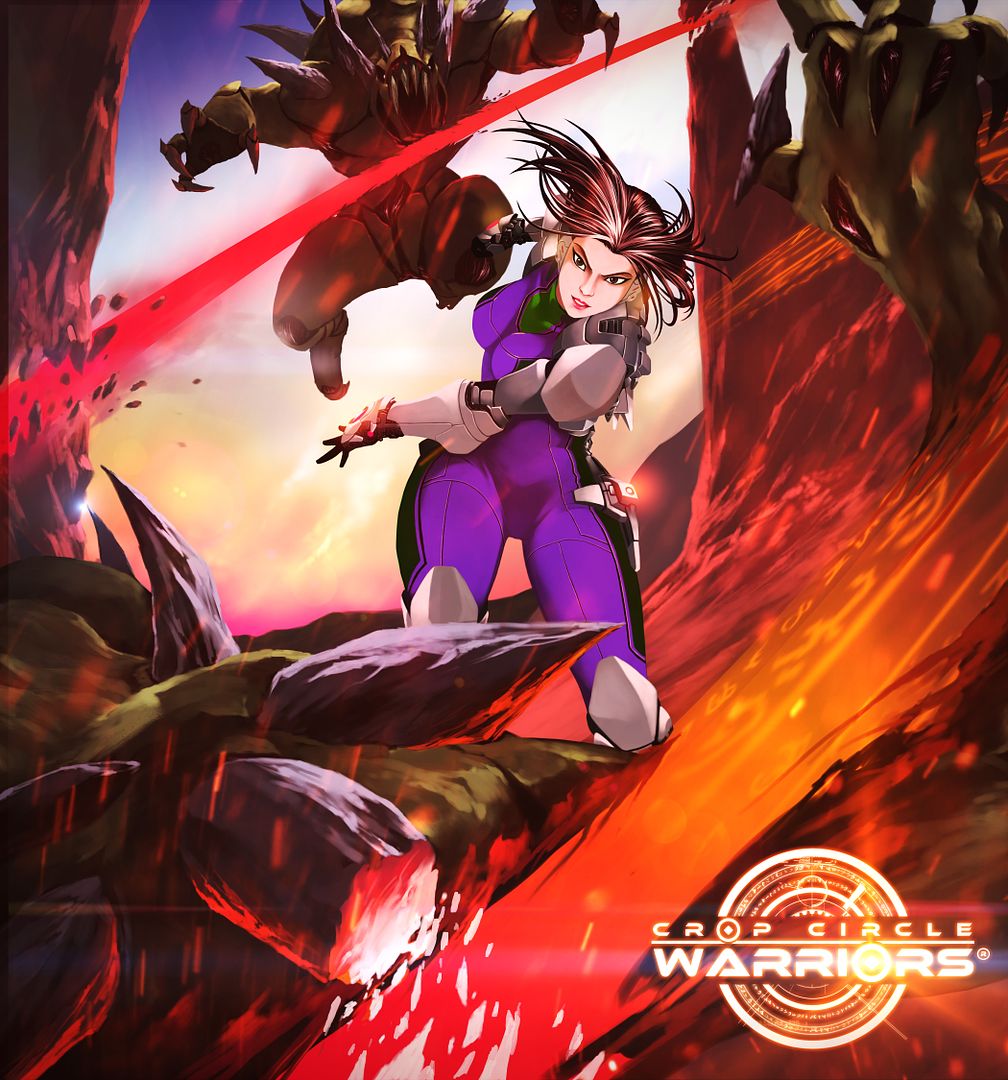


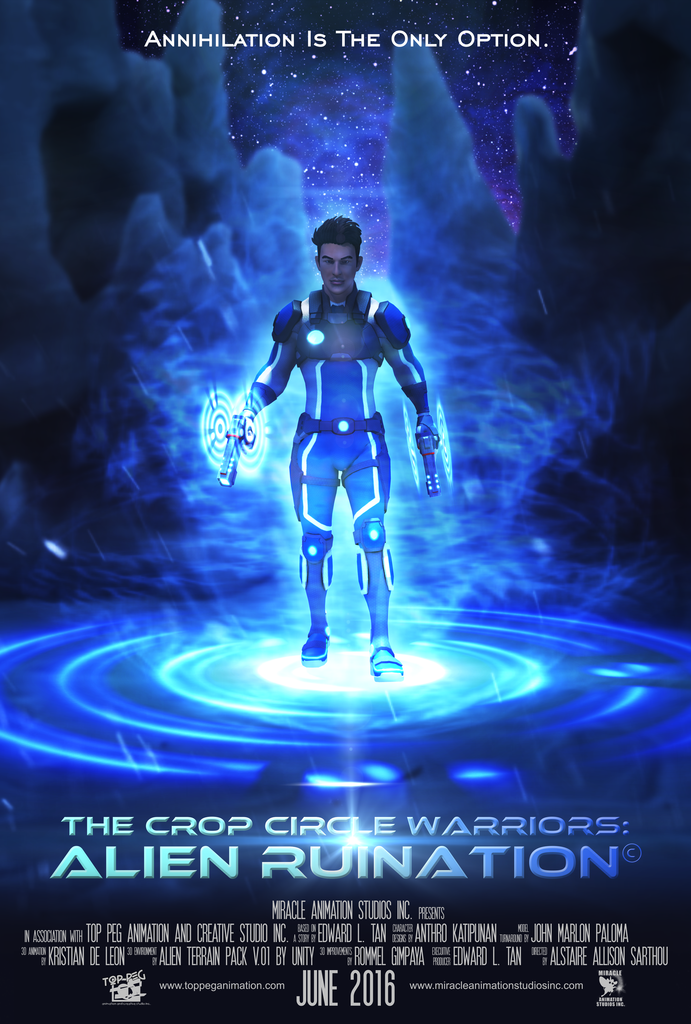
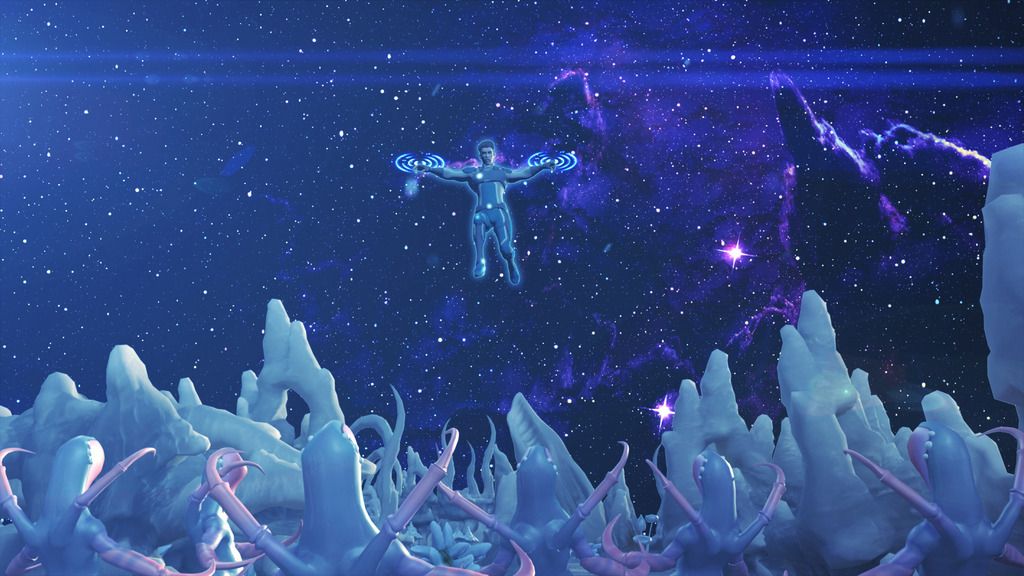
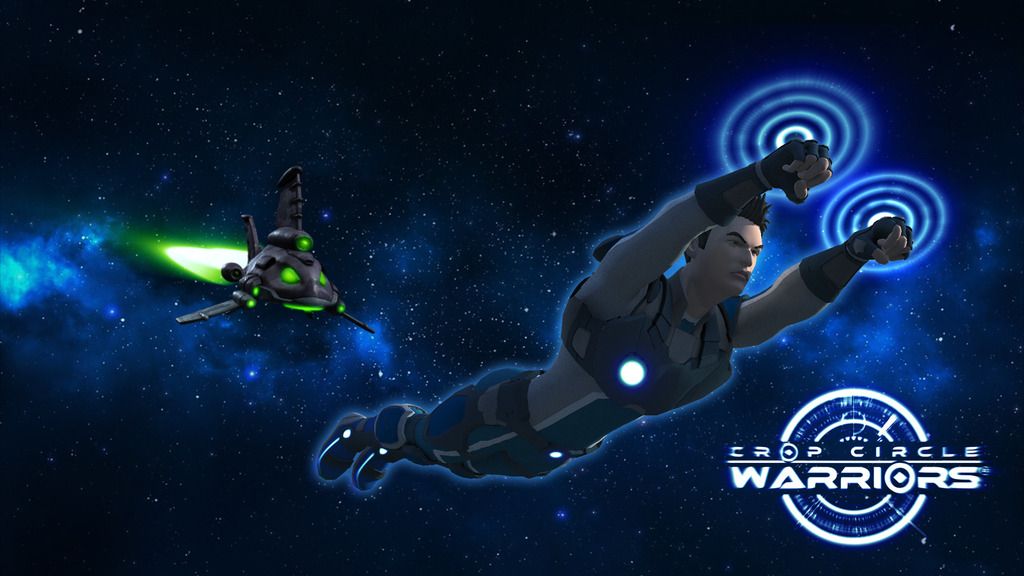
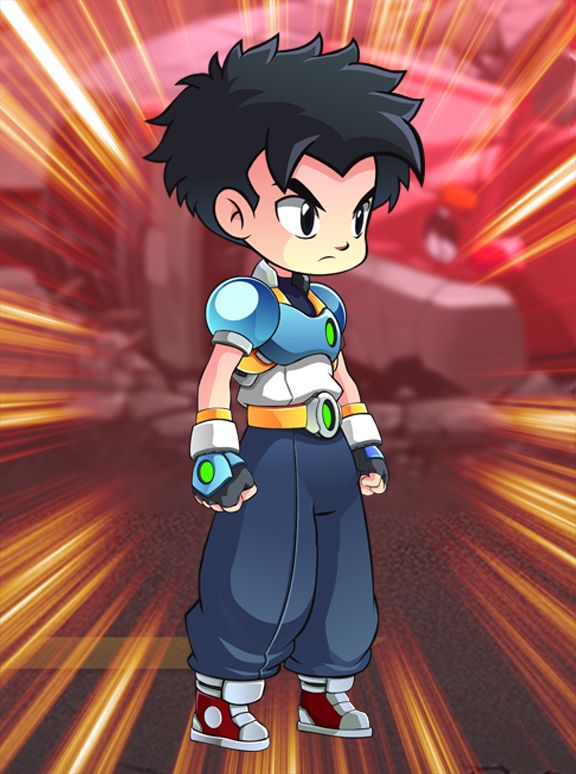


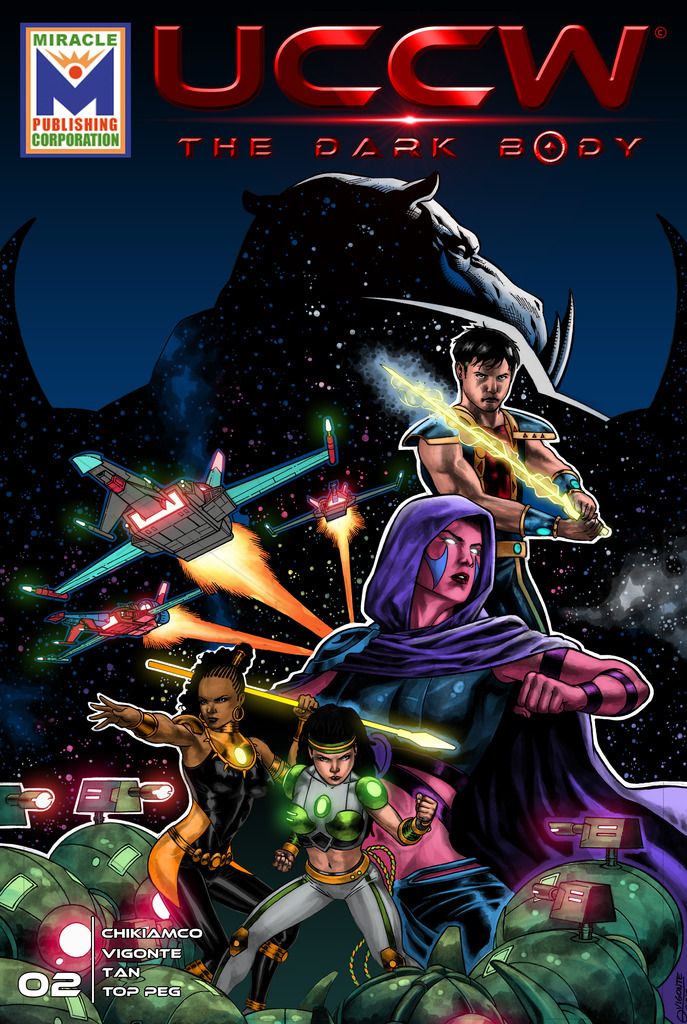
i’m one of the participants of the said activity training and assessment for 2D Animation NC III, thank you TESDA for upgrading and innovation of animation in the Philippines.